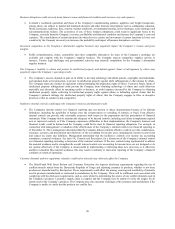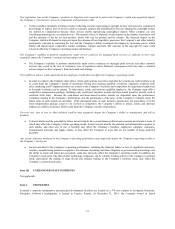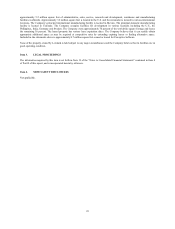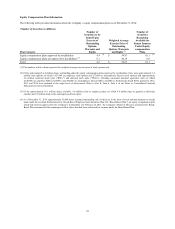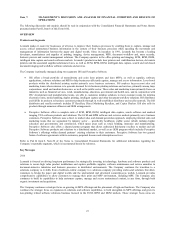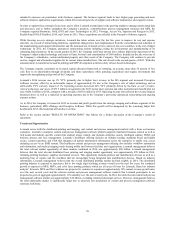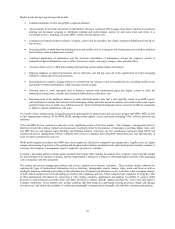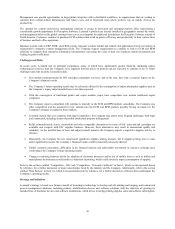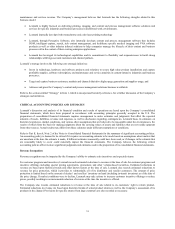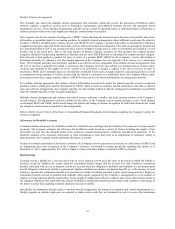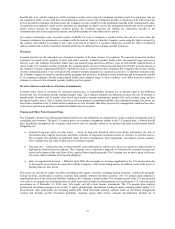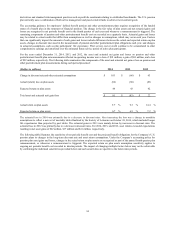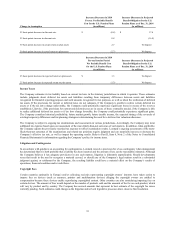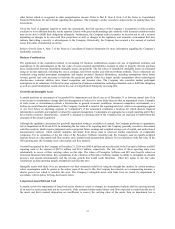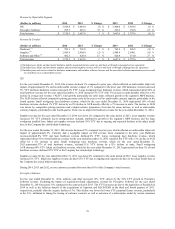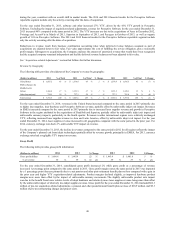Lexmark 2014 Annual Report Download - page 34
Download and view the complete annual report
Please find page 34 of the 2014 Lexmark annual report below. You can navigate through the pages in the report by either clicking on the pages listed below, or by using the keyword search tool below to find specific information within the annual report.Management sees growth opportunities in large/global enterprises with a distributed workforce, in organizations that are seeking to
optimize their content-related infrastructure and reduce costs, and in functional areas where workers rely on mobile devices for
productivity.
The demand for content and process management solutions is strong in developed and emerging markets alike, representing a
considerable growth opportunity for Perceptive Software. Lexmark’s products are already installed in geographies around the world,
and management believes this global customer base serves as an impetus for additional installations for Perceptive Software outside of
North America. Customers continue to purchase ECM solutions that result in greater efficiency and productivity in their various lines
of business and back office operations.
Business systems such as ERP, EMR, and CRM systems represent a mature market and remain vital applications but do not satisfy an
organization’s enterprise content management needs. The Company expects organizations to continue to look to ECM and BPM
solutions to complete their enterprise information infrastructure, increasing the value of their core business system investments and
leading to gains in efficiency.
Challenges and Risks
In recent years, Lexmark and its principal competitors, many of which have significantly greater financial, marketing and/or
technological resources than the Company, have regularly lowered prices on printers and are expected to continue to do so. Other
challenges and risks faced by Lexmark include:
New product announcements by ISS’ principal competitors can have, and in the past, have had, a material impact on the
Company’s financial results.
The Company’s future operating results may be adversely affected if the consumption of inkjet aftermarket supplies used in
the Company’s legacy inkjet installed base is less than expected.
With the convergence of traditional printer and copier markets, major laser competitors now include traditional copier
companies
The Company expects competition will continue to intensify as the ECM and BPM markets consolidate. The Company sees
other competitors and the potential for new entrants into the ECM and BPM markets possibly having an impact on the
Company’s strategy to expand in these markets.
Lexmark expects that as it competes with larger competitors, the Company may attract more frequent challenges, both legal
and commercial, including claims of possible intellectual property infringement.
Refill, remanufactured, clones, counterfeits and other compatible alternatives for some of ISS’ toner and ink cartridges are
available and compete with ISS’ supplies business. However, these alternatives may result in inconsistent quality and
reliability. As the installed base of laser and inkjet products matures, the Company expects competitive supplies activity to
increase.
Historically, the Company has not experienced significant supplies pricing pressure, but if supplies pricing was to come
under significant pressure, the Company’s financial results could be materially adversely affected.
Global economic uncertainty, difficulties in the financial markets and unfavorable movements in currency exchange rates
could impact the Company’s future operating results.
Changes in printing behavior driven by adoption of electronic processes and/or use of mobile devices such as tablets and
smart phones by businesses could result in a reduction in printing, which could adversely impact consumption of supplies.
Refer to the sections entitled “Competition – ISS” and “Competition – Perceptive Software” in Item 1, which are incorporated herein
by reference, for a further discussion of major uncertainties faced by the industry and the Company. Additionally, refer to the section
entitled “Risk Factors” in Item 1A, which is incorporated herein by reference, for a further discussion of factors that could impact the
Company’s operating results.
Strategy and Initiatives
Lexmark’s strategy is based on a business model of investing in technology to develop and sell printing and imaging, and content and
process management solutions, including printers, multifunction devices and software solutions with the objective of growing its
installed base of hardware devices and software installations, which drives recurring printing supplies sales and software subscription,
30


